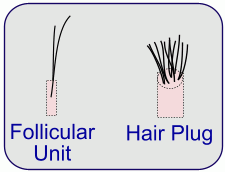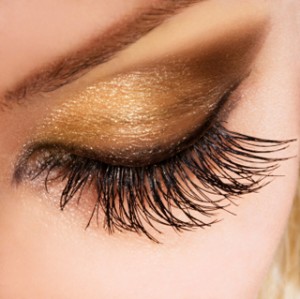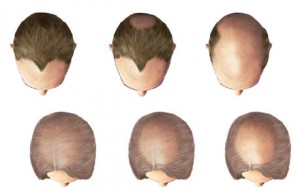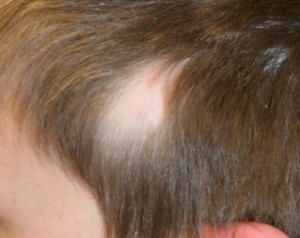Archive for January, 2010
Tuesday, January 26th, 2010

Q:
About 18 years ago, I underwent a hair restoration procedure with primitive technology. Nowadays, I’m very reluctant to ever do such a thing again. Since I had the transplant, I’ve been wearing a hair piece, which I don’t really like to do. I wonder: is it possible for my hair to ever look the way it did in my twenties? And, also, what if I don’t have enough donor hair, can I still get a hair transplant? If I don’t have enough donor hair, body hair is possible, right?
Also, I’m an algebra teacher, anyway this can be afforded on a salary like mine?
Sincerely,
-
A:
I appreciated the email. Here are my answers to your questions, in chronological order.
1. Most of the time, it can be corrected. A lot of our patients actually have needed repair hair transplants. Their situation was very similar to yours in that they had plugs or micro-graft surgeries.
2. Whether your donor hair is sufficient, I don’t know. I have to examine you for that. A good majority of people have enough hair to cover up a hair plug procedure. Some men have so much donor hair that they can even cover up other areas of hair loss.
3. It is plausible to use body hair, but it is much better to use head hair. If you’re in a situation in which you have virtually no scalp hair, and also high-quality body hair, you could be a good candidate for a body hair to head procedure.
4. I can’t tell you if your hair transplant surgery will be affordable right now. Only after I evaluate you. It’ll all be based on the number of grafts that you require. We offer discounted rates to qualified candidates on our standby program.
5. Make sure to attach photos of yourself and email them to me. The photos we need of your head are from the front, left and right sides, top and back. Make sure to also include a picture of the hair plugged areas of your head so I can take a better look at it.
After taking a look at your head shots, I’ll have a phone consultation with you and talk about the options that are open to you. It’s also a time where I can reply to all your questions.
Tags: donor hair, hair plug, hair restoration, hair restoration procedure, hair restoration surgery, hair transplant, hair transplant surgery, old hair plug, plug, repair hair plug
Posted in hair transplant, men hair restoration | No Comments »
Saturday, January 23rd, 2010

Q:
Hello, Doctor,
I’m an adult female in my early thirties. I’m trying to find a way to enhance my appearance but I don’t want to go under the knife, like breast enhancement or even lip enhancement. I’m not really a young girl anymore and feel like I need to look as good as ever to attract a good-looking man. I happened upon Latisse on the Internet and I’d like to know how to order it.
-
A:
Hi,
Thanks for the email. It’s always good to get inquiries from the general public. You can only obtain Latisse from a physician, and that’s with a prescription. Make sure not to buy Latisse anywhere except at a credible pharmacy or from a doctor’s office. It’s possible there may be phony Latisse-like products you may find on the street or on the Web. Stay away from these imitations; they may have dire side effects.
Side effects from taking Latisse are things like your eyelids becoming darker, likely temporary, and a likelihood that iris color may become much more brown, which is more likely to be a permanent condition.
On the flip side, Latisse will make your eyes look prettier. No doubt about that. People, women especially, want a soft, doe-eyed a look. With the chemicals found in Latisse, it will give your lashes a thicker look and make them longer. Latisse will actually increase the length of your eyelashes, for a certain period of time. Then they will return to their original look.
If you really desire your eyelashes to be longer, Latisse is for you. There are also doctors who perform eyelash transplants. I know people diagnosed with Alopecia Totalis sometimes get an eyelash transplant. Then there are those who don’t have a lot of eyelashes and want more, to enhance their physical appearance.
We do offer Latisse in all our Southern California hair restoration offices.
Tags: latis, latise, latisse, latisse buy, latisse eyelash, latisse eyelash enhancer, latisse prescription
Posted in California hair transplant, Newport Beach hair transplant, Orange County hair transplant | No Comments »
Tuesday, January 19th, 2010

Q:
Hey Dr. Parsa Mohebi,
I’m grateful you took time out to see me on Saturday. The letter that gave a summary of what we talked about was very thorough and I just wanted to say thanks for that.
Since the last time we met, I did some of my own research and came up with a few queries:
1) When it comes to giving a name to my hair loss pattern, is Alopecia the correct way to describe it?
2) Would a Cortizone shot be an option for me?
3) Is laser therapy OK?
4) If I happen to use minoxidil, I’m wondering if it has to be 2% or would a higher percentage result in more hair growth and faster hair growth?
5) I was told to receive a complete medical evaluation, do you know of a doctor I can go to? I want someone I can trust.
Thanks again for taking the time to see me and also to accommodate my questions.
Sincerely,
Stephen
-
A:
Hello Stephen,
I’ve provided answers to your questions in chronological order.
1) When it comes to giving a name to my hair loss pattern, is Alopecia the correct way to describe it?
Alopecia, literally, would be defined as hair loss. There are many different types of alopecia or hair loss, such as male patterned alopecia or female patterned alopecia or alopecia cicatricial. I believe the pattern on your head is a male pattern since hair was lost in the frontal area as you kept hair on the donor area intact. This is the reason you may be a potential candidate for a hair transplant since your medical evaluation stated that you’re not medically treatable for hair loss.
2) Would a Cortizon shot be an option for me?
Absolutely not. But steroid shots are sometimes used for Alopecia Areata (AA), which is an autoimmune disorder. Alopecia Areata is a hair loss condition with patchy hair loss spots. Your condition is not Alopecia Areata.
3) Would you consider laser therapy?
I do not recommend laser therapy for hair loss in the form of laser comb or laser machines because of the lack of solid medical evidence that support their effectiveness at this time.
4) If I were to use Monoxidil, does it have to be 2% or a higher percentage would yield more and faster hair growth?
You can start with 2% and then you need to be re-evaluated in six to 12 months and a treatment plan might need to be adjusted at that time.
5) you recommended a complete medical evaluation, could you please recommend someone that you trust?
Any good internist or endocrinologist could follow through with the lab works that you need. Our letter includes the list of medical conditions that should be considered and lab works to rule out those women like you who have hair loss. You can share my letter with any good internist or endocrinologist and he or she should be able to follow through with your lab result and treat any treatable conditions that could possibly be found.
Have a great day,
Tags: alopecia areata, hair loss, hair loss pattern, hair loss treatment, laser therapy, laser therapy for hair loss, minoxidil
Posted in Bakersfield hair transplant, California hair transplant, hair loss medication, hair loss products, hair transplant, men hair restoration, Newport Beach hair transplant, Orange County hair transplant | No Comments »
Friday, January 15th, 2010

Not too long ago, consumer columnist David Lazarus, in a Los Angeles Times story, mentioned he had visited an open house at a hair transplant office and, to his surprise, saw that there were a lot of men who showed up. For him, it was unexpected. Lazarus said he had a conversation with the owner of the hair transplant center and learned that, in this fragile economy, a lot of men who are shopping for a hair transplant are thinking that it will better their job opportunities by having a full head of hair.
According to a CNN report, findings have shown that people who are better looking, or are slim (vs. fat), or who are of a younger age tend to have better success in the nation’s economy. These “lookers” bring in more money, have a better chance of moving up in the company, and tend to be treated more graciously. Albeit the results of this study may be a bit disturbing, it may be a somewhat accurate reflection of our society.
When we take into account these conclusions, it ought to come as no surprise that there are balding men in America who really hold fast to the idea that they can boost their chances of landing a job by sporting a full head of hair. It might just end up being a mental edge, or a self-esteem enhancer, for these adult males to give a good impression during their interviews.
All things considered, in my humble view, the crucial aspect of a job interview is a how a potential employee presents himself to his interviewer. The responses she gives, her demeanor, attitude about previous employers, and overall impression.
But, these days, some men believe it wouldn’t decrease their chances to have a full head of hair. In addition, due to the slumping economy, a hair transplant cost is at an all-time low for high-quality hair restorations. If there ever was a time to get a hair transplant for those who, under different circumstances wouldn’t get one, now is the time.
Tags: balding men, hair loss, hair loss and job prospects, hair restoration, hair transplant, job prospects, men hair loss
Posted in Bakersfield hair transplant, California hair transplant, hair transplant, men hair restoration, Newport Beach hair transplant, Orange County hair transplant | No Comments »
Tuesday, January 12th, 2010

In the past 30 years, alternate types of therapy for enhancing wound repair have been mentioned. For this entry, I wanted to talk about the cutting-edge areas of stem cell therapy and gene therapy in wound healing. When it comes to gene therapy, it was first put into practice for treating congenital defects. Now, it is a fresh alternative for affecting wound repair. To speed up the process of wound closure, genes encoded for growth factors or cytokines revealed the greatest potential.
Most gene delivery systems have roots in viral transfection, naked DNA application, high pressure injection, or liposomal vectors. Embryonic and adult stem cells posses an extended self-renewal ability with the capacity to differentiate into various tissue types. Different types of sources, such as bone marrow, peripheral blood, umbilical cord blood, adipose tissue, skin and hair follicles, have been used to separate stem cells to speed up the healing response of acute and chronic wounds.
Not too long ago, the grouping of gene and stem cell therapy has come to the forefront as a potential option to care for chronic and acute wounds.
For potential hair transplant patients, this breaking development about gene and stem cell therapy in hair restoration is fantastic news because a rapid healing from stitches in the donor area would make for a much quicker and painless procedure. There are all kinds of different types of hair loss, but, if a hair loss sufferer undergoes a hair transplant, it would be imperative that his stitches would heal quickly.
Source information was provided by the following authors: Branski LK, Gauglitz GG, Herndon DN, Jeschke MG.
Department of Surgery, The University of Texas Medical Branch and Shriners Hospitals for Children, Galveston, TX 77550, United States.
Tags: donor scar, gene therapy, hair loss, hair restoration, hair transplant, stem cell therapy, wound healing, wound treatment, wounds
Posted in Bakersfield hair transplant, California hair transplant, hair transplant, men hair restoration, Newport Beach hair transplant, Orange County hair transplant | No Comments »
Saturday, January 9th, 2010

The possibility of restoring hair loss through alternative hair restoration options such as by using finasteride or Rogaine is an issue some people may be wondering about. Although hair restoration through these shortcut methods (without a hair transplant procedure) might be OK for some people, I can’t advocate it as a full-fledged solution. Advertisements may try to sway you into believing it is the answer.
Today, FDA has OK’d certain medications for hair loss prevention: finasteride and minoxidil. I must say, both are legitimate treatments, but they may have various indications for a male and female baldness pattern. But they are not, I repeat, they are not a cure-all solution for male patterned baldness, as other pharmacy industry experts may try to get you to believe.
A hair transplant ought to be thought of as a preventive agent, along with other alternativest. And also as vital part of a bigger plan on looking your best. A lot of men and women experience shock loss after a hair transplant surgery; these people are required to try preventative measures like finasteride, at least a month or two before the hair transplant.
Since hair restoration surgery started (in the 1990s) and until recently, when a hair restoration surgery was done, shock loss had been a significant issue hair transplant patients had to deal with.
But these days, a good majority of patients go on finasteride after a hair transplant surgery.
Tags: fda, finasteride, hair loss treatment, medical hair restoration, minixidil, prevention of balding, shock loss
Posted in Bakersfield hair transplant, California hair transplant, hair loss medication, hair loss products, Newport Beach hair transplant, Orange County hair transplant | No Comments »
Tuesday, January 5th, 2010

The fruit Serenoa Repens produces Saw Palmetto. Saw Palmetto is an extract of it. Saw Palmetto has plenty of fatty acids and phytosterols. Considered by many to be an alternative medicine for different kinds of indications, most notably benign prostatic hyperplasia (BPH).
People who are diagnosed with benign prostatic hyperplasia (BPH) have enlarged prostates have difficulty urinating to the point that patient may need prostate surgery for it.
The part Saw Palmetto plays in hair restoration has been well researched. Incredibly, for a lot of people, Saw Palmetto is a plant-based treatment which, up to a certain point, can reverse the hair loss process or delay hair loss. Saw Palmetto’s bio active ingredients block the conversion of testosterone into dihydrotestosterone (DHT).
So, on the hair follicle level, Saw Palmetto is able to halt the process of hair loss. In addition, Saw Palmetto promotes the increased thickness of miniaturized hair, helping them grow longer. In mechanism, the Saw Palmetto effect is sort of similar to finasteride or other DHT blockers. Available in oil extract, Saw Palmetto can be used topically on hair scalps or as pills to treat prostate enlargement.
Tags: balding prevention, benign prostatis hyperplasia, BPH, dht, dihydrotestostrone, finasteride, hair loss product, hair loss treatment, male patterned baldness, saw palmetto, Saw Palmetto Extract
Posted in California hair transplant, hair loss medication, hair loss products, men hair restoration, Newport Beach hair transplant, Orange County hair transplant | No Comments »
Friday, January 1st, 2010

The other day, we just completed a hair transplant procedure with a child who has Congenital Temporal Alopecia (CTA). The day he was born, he had a bald patch on his head. It really weighed heavy on his mind and the thought of waiting until Christmas break (the time his parents had first planned to get it restored) was absolutely unbearable. The surgery was a success. We closely packed 470 follicular unit grafts onto the bald patch of his temple area. He’s really excited and anticipates the final growth of his hair grafts in the next several months.
Congenital Temporal Alopecia is a hair loss condition which is present at birth and takes the form of a patchy hair loss on a child’s temple area of the head. The bald patch can be made up of very fine hair. It’s a non-scarring type of alopecia which, reportedly, responds rather positively to hair transplant surgery.
Tags: alopeica, congenital temporal triangular alopecia, non scarring alopecia, patchy hair loss, TTA
Posted in men hair restoration, Uncategorized, women hair loss | No Comments »
|
|








